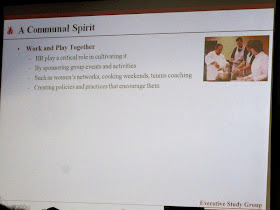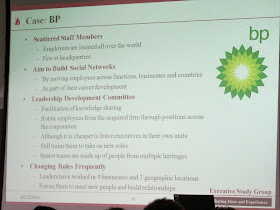The Seminar on Authentication of Chinese Medicines was joinly organized by the Hong Kong Accreditation Service (HKAS) and the Hong Kong Council for Testing and Certification (HKCTC) on 10 July 2012. Hong Kong has been a major trading centre for Chinese Medicines (CM). The seminar aims to let the testing and certification (T&C) industry and the Chinese medicines trad know more about authentication testing based on Hong Kong Chinese Materia Medica Standards (HKCMMS). I would like to summarize the seminar below for sharing.
In the beginning, Dr. Lawrence LAI (Convener of the Panel on Promoting Testing and Certification Services in Chinese Medicine Trade) gave a welcoming remarks. He said that the development of T&C industry for CM enhanced the customer trust on CM trade.
Souvenir Presentation and group photo with speakers
The first speaker was Mr. LAW Kwok Wai (Senior Pharmacist (Traditional Chinese Medicine), Department of Health) and his topic entitled "Development of Hong Kong Chinese Materia Medica Standards (HKCMMS)".
The Department of Health had published four phases of the HKCMMS to cover 96 Chinese Materia Medica (CMM), which would be extended to cover 200 CMM in 2012. Mr. LAW said HKCMMS aimed to:
- promote the research of CMM
- provide the reference material to the industry
- ensure the safety and quality of CMM
- enhance Hong Kong Chinese Medicine modernization and international
- increase CMM trade
The second speaker was Mr. NG Chi Shing (Senior Chemist (Pharmaceutical Quality & Investigation Sec), Government Laboratory) and his presentation was "Identification of Chinese Materia Medica by Chemical Testing".
Mr. NG showed the authentication using chemistry technique (e.g. Physical reaction, TLC, HPLC, etc.).
Then Mr. NG described the application for CMM such as authentication, quality measurement using different technique such as LCMS, DNA fingerprint, etc. He concluded that chemical test was able to provide objective scientific data, identify the CMM and provide safety test, as well as, apply for developing HKCMMS.
Prof. ZHAO Zhongzhen (Associate Dean, School of Chinese Medicine, Hong Kong Baptist University) was the third speaker and his presentation title named "Use of Microscopic Identification in the Authentication of Chinese Medicines".
Prof. ZHAO's Standard Authentication Procedure was published by Planta Medica. That procedures were "Literature Review", "Botanical Origin Identification", "Macroscopic and Microscopic Identification", "Physical and Chemical Identification", and "Biological and Molecular Identification".
Cordyceps sinensis and its counterfeits using Macroscopic and Microscopic Identification were discussed.
Q&A Discussion
During discussion, I would like to know what is the different between HKCMMS and China CMM standard. Speakers replied that HKCMMS included cross-section & powder identification but China mainly used powder identification. In chemical test, HKCMMS also included CMM fingerprint analysis. Another question was related to Certified Reference Material of CMM. It should purchase through China Government Organization.
Mr. Tommy Y.S. LI (BBS, MH, JP, Hong Kong Chinese Medicine Industry Association) was the fourth speaker and his topic entitled "The Need for Authentication of Chinese Medicines". In the beginning, Mr. LI briefed the development history of CM.
After that Mr. LI showed several types of Chinese Medicine which were easily confused such as Cordyceps sinensis. Finally, Mr. LI said the CM authentication techniques needed industrial recognization, convenience, economic and government support.
The fifth speaker was Ms. CHIU Shuk-Yee (Senior Investigator, Consumer Protection Bureau, Customs and Excise Department) and he presented the topic "The need of Authentication Test of Chinese Medicine in the Enforcement of Trade Descriptions Ordinance".
Ms. CHIU described the complaint statistics of CM from 2009 to June 2012. Counterfeit of CM was one of key factors.
After described the product description regulation, Ms. CHIU shared different charged cases such as Cordyceps sinensis (Counterfeit).
The last speaker was Dr. John HO (Senior Accreditation Officer, Hong Kong Accreditation Service) and his topic entitled "Accreditation Services for Testing and Identification of Chinese Medicines".
Dr. HO introduced several Accredited Chinese Medicine Testing Services through HOKLAS scheme. It included safety and quality tests.
Finally, Dr. HO concluded that accreditation of CM testing could enhance the position of CMM trading centre in Hong Kong.
Q&A Discussions
One of questions was about the punishment of wrong description of CMM. The punishment was separated into 6 level which were HK$2000, $5000, $10000, $25000, $50000 and $100,000.


















































